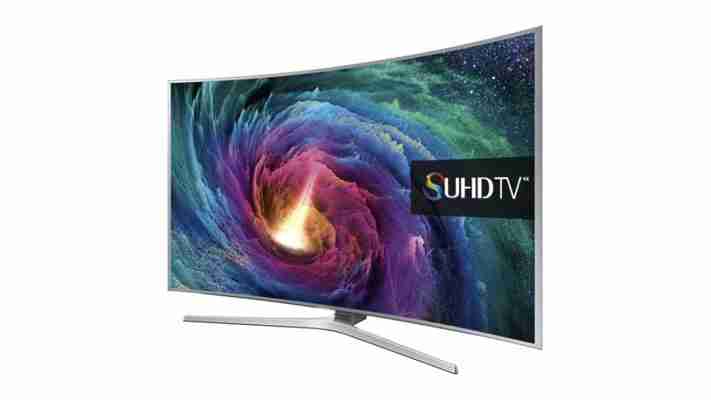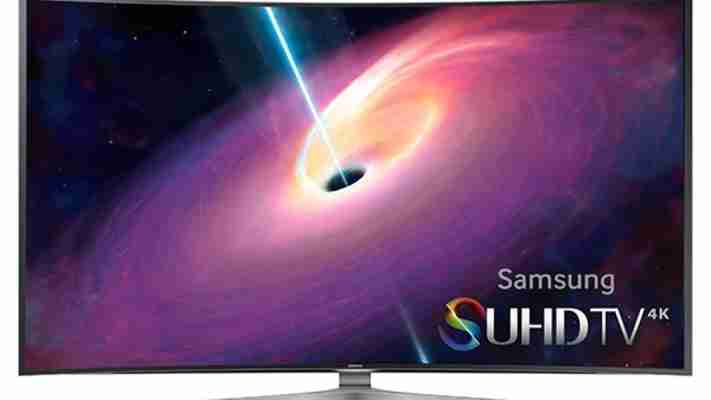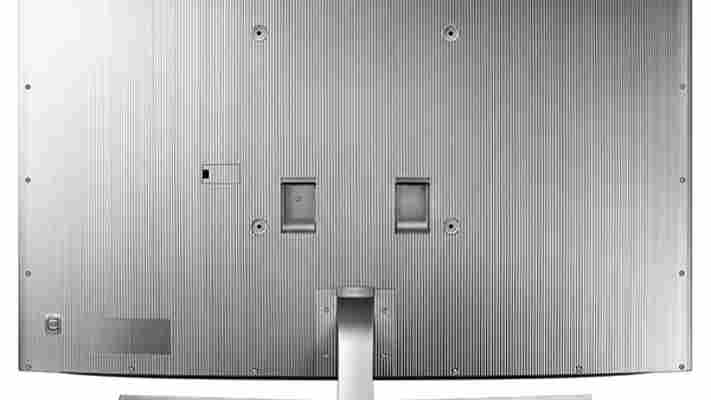Samsung JS9000 Samsung UE65JS9000 review
4K is undoubtedly a major upgrade over Full HD, but Samsung wants its new premium TV range to stand out even more – so much so it has created a dedicated sub-brand. The JS9000 is the first SUHD TV we've seen, and although we aren't convinced the 'S' in SUHD really stands for anything special, the JS9000 certainly has a headline features that will make you think otherwise.

Chief among these is support for High Dynamic Range, or HDR, which uses a more powerful backlight to open up a wider colour palette and produce brighter, more vivid images with greater levels of contrast. Sunlight glinting off the ocean in The Life of Pi looked incredibly natural, illuminating the scene with impressive peak brightness, although we thought the effect was more prominent on the gold chainmail armour on the Pharaoh's guards in Exodus: Gods and Kings. It glinted in a way that simply can't be achieved without HDR and, combined with the 4K resolution, gives the impression of even more detail, making clips truly pop out of the screen. As with 4K when it first appeared, there's an elusive amount of HDR content available right now as the standard has yet to be finalised, but at least it means your TV is futureproof for when it does eventually arrive.
For this review we tested the 65in model in the JS9000 range, but it's also available in 48in (UE48JS9000) and 55in (UE55JS9000) screen sizes. All models have identical specifications except for their dimensions and power usage. We're confident that image quality will be practically identical across the range.
The JS9000 also comes with Samsung's brand-new Tizen smart TV interface, silver stand and bezel, and a beautiful curved quantum-dot panel, making it one of the most stylish (and imposing) 65in TVs we’ve seen this year. Quantum-dot technology is a little different to traditional LCD, as it uses nanocrystal semiconductors to emit different colours based on their size. By placing a film of these dots in front of the LCD backlight, the TV can produce much brighter, more vibrant colours - Samsung claims it should be twice as bright as a traditional LCD.

This was certainly the case in our initial tests. Peak brightness measured 318.05cd/m2 on the Standard picture mode, with Dynamic reaching almost 490cd/m2. This can always be adjusted using the backlight controls, but you certainly won’t be lacking a bright, punchy picture. We felt whites had a pinkish tint on Normal mode out of the box, but we were otherwise impressed by overall colour accuracy. Our colour calibrator returned an sRGB colour gamut score of 97.1%, with blacks measuring a pleasingly deep 0.08cd/m2. Contrast was also high, measuring 3,827:1, providing our images with plenty of detail.
We switched to Cinema mode for the rest of our testing, increasing the Backlight up to 19 to match Normal’s high brightness levels. We then went into the 10-point white balance settings in the advanced settings menu and set the interval to 90%, altering red to +16, green to +2 and blue to -22. This balanced out the JS9000’s white levels considerably, increasing the TV’s overall colour accuracy to an outstanding 99.6%. Blacks unfortunately slipped up to 0.11cd/m2 while contrast fell to 2,950:1, but it was difficult to spot any difference by eye.

In Star Trek, for instance, night scenes were still full of detail, and the depths of space looked dark and inky – at least when we were looking at the TV face on. Shifting to the side a little revealed a few lighter areas toward the edges, particularly in the corners of the film’s letterbox borders. This is a problem we’ve encountered on other curved TVs, as we’ve found their viewing angles can be rather limited. Colours also lost some of their vibrancy when looking from the side. This obviously isn’t ideal, especially on such an expensive TV, and it hardly makes a compelling case for having a curved screen when cheaper, flatter 4K TVs such as the Panasonic TX-55AX902 provide such superior viewing angles.
You’ll also want to watch as many HD TV channels as possible, as the JS9000’s upscaling was rather disappointing. Standard definition TV was incredibly blocky and soft, even with the MPEG Noise Filter and Digital Clean View options set to High. Text was also very difficult to read, but things greatly improved when we switched to HD channels. The entire picture was much clearer and nearly all noisy artefacts disappeared. Continues on Page 2